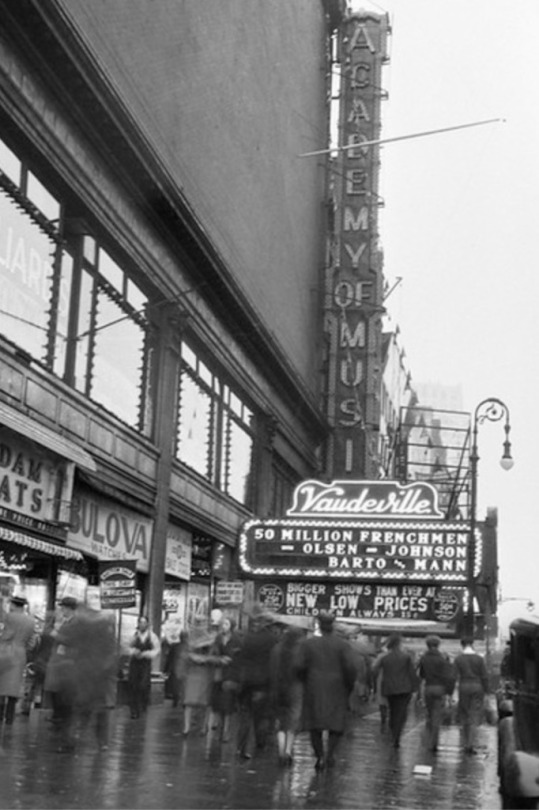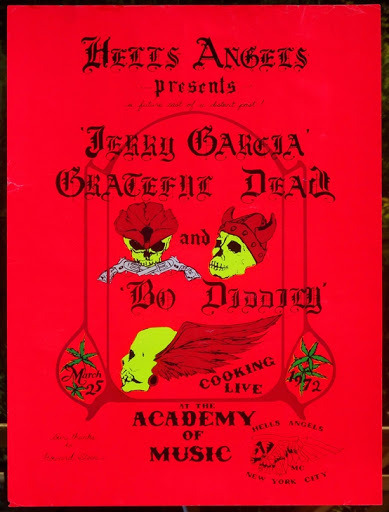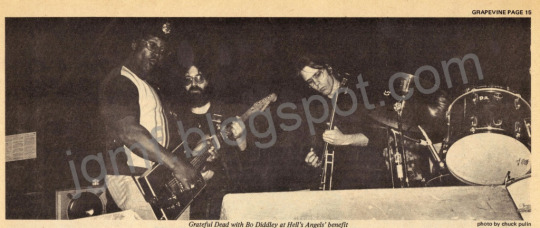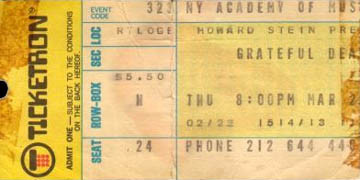#bobby d found not liable
Explore tagged Tumblr posts
Text
Canal Liable for gender discrimination and retaliation
Bobby D not personally liable for either
Chase Robinson not liable for taking his air miles. She wins $1.2 million and Bobby D will likely have to pay her court fees.
Bobby D was not in court this evening when the jury returned it’s verdict
Does anyone have any thoughts on this?
I know I do. I will post them in the next few days in a series of posts looking back over the case including the depositions.
#robert de niro#bobby d#news#articles & interviews#robinson vs de niro case#chase robinson#chase robinson wins gender discrimination and retaliation lawsuit#canal found liable#bobby d found not liable#Chase wins $1.2 million
1 note
·
View note
Note
13. I would believe you're fine but you've got a Goddamn knife sticking out of your leg, so. - I mean this could work for SO many of them. I'm going with Alex or Luke speaking. You can choose who they are speaking to.
"We're broke," Luke declared. "And in a like, we will starve and/or get kicked out if we don't get money soon kind of way."
"Weather is too shit to go busking," Alex commented, eyes trained on the gray sky. "And we don't have any gigs for a few weeks."
"We could always get jobs?" Reggie suggested. The other two glared at him. "I know, but it's that or go back to living in Bobby's unheated garage for the winter."
Luke and Alex shivered at the thought-yes, Bobby had been fine with them squatting, but there wasn't much he could do about their studio space having no heat. A space heater for practices was viable, but not all the time, not with the three of them being 'walking disasters who would be liable to catch the place on fire' if he left it there.
So they had found their own place-it was small, and shitty, but it had heat, was pretty cheap, and that's what mattered. Keeping it had to become their priority.
Luke went to the diner that had hired him under the table when he first ran away, and even though he wanted to light the paper hat on fire, it wasn't a terrible job, plus the owner let him eat for free. Alex went to the laundromat-a boring job, but it meant they could do their clothes on his shifts without worrying about them being stolen (again) or having all of Alex's whites turn pink (since that could only happen once right?)
Reggie went all around, but given he wasn't 18 yet, there weren't a lot of places that would hire him-or take the fake he offered in the light of day. To be fair, it was a really bad fake. But the guy who ran the shady convenience store either had shit vision, or was desperate, because he gave Reggie a job on the spot-working overnights.
"Shit, be careful newbie," the guy training him in stated. "This place gets robbed like, twice a week during overnights."
"Great," Reggie said. "Just great."
"It's cool, just hand over what's in the till, call the cops, then Joe, and we'll deal with it in the morning."
Reggie grimaced but nodded-he knew it was a rough neighbourhood, and times were tough, but he still didn't relish the thought of being held up with regular occurrence. He also knew if he told the guys they would tell him to quit, and he really didn't want to have to resort to doing janitorial work.
So Reggie went to work every night, usually pretty bored as he sold the odd pack of cigarettes, lotto tickets, or snacks. He got a lot of reading done, which was good, because working nights meant he had to sleep during the day and not doing the coursework he needed to finish to get his GED.
He also worked on songs, D&D campaigns, and made plans for the upcoming Ren Faire. He was looking forward to it-even if Alex and Luke thought it was lame, he loved getting to dress up like a knight and play the lute and eat giant turkey legs.
The only thing was that he had to train wearing the chain mail again-it was heavy and harder to move in than his usual garb of a leather jacket. This he started wearing it under his work uniform, getting used to the weight as he stocked the shelves and served the odd customer.
This of course, is when his luck ran out.
Up until this point he had only been held up a couple times, usually by someone who looked pretty rough, and Reggie just opened up the cash and waited a few minutes to call the cops. They never got much, and at this point, he didn't think the authorities were doing much to get the paltry sum back.
Tonight, however, was different. The guy had a knife for one-most of the rest of them just threatened with words, or the lame pointed finger miming a gun in their pocket. He looked a little out of it for two-eyes wide and unfocused, his speech off just a bit. "Gimme the money."
"Okay buddy," Reggie said. He turned to get the key to the register-they were too old to even have a button to open them without a purchase. He felt a thump on his back, but didn't think of it, he was used to having things thrown at him, it didn't even faze him any more.
Only when he turned, the robber was looking at him like he was a ghost, stammering as he ran out, cash in hand. Reggie sighed, calling the cops and Joe, hoping they found the guy, or at the very least, took the knife from him.
"Hey Reg!" Alex said as he came in, Luke trailing behind him.
"What are you doing here?" he asked.
"Insomnia," Luke replied.
"And he woke me up as a result," Alex grumbled good naturedly. Since they only had one big bed, if one of them wasn't sleeping, none of them were. "Figured we could come here and bug you. Get some snacks."
Reggie shook his head, waving them on, knowing what they would get; you learned people's vices after knowing them most of your life. Luke would go for something spicy, with a sour candy to go with it. Alex would get something in a flavour no one should like, plus a chocolate bar that would certainly upset his stomach in a few hours, though he always claimed it was worth it.
Reggie went back to stocking the shelves behind him, waiting for the guys to bring their snacks up.
"Reg?" Alex's voice was high and wavering. "You okay bud?"
"Oh yeah, I'm fine," Reggie replied. "Why?"
"I would believe you're fine but you've got a goddamn knife sticking out of your back, so."
"Oh, do I?" Reggie replied, reaching back and hitting the handle of the blade, taking it out, finding the tip was bent. "Well at least that dude doesn't have it-whatever he was on was powerful shit."
"Reggie did you not notice you got fucking stabbed?" Luke asked.
Reggie lifted his shirt, showing off the chain mail. "Doubt it even left a scratch."
"I don't even want to know," Alex said with a shake of his head. "You should call the cops."
"I did that when he tried to hold the place up," Reggie replied, "Though I doubt they'll come it happens so often."
Alex glared at him. "What do you mean."
Reggie shrunk then sighed. "This place gets held up a lot. Though this is the first time they've had a weapon,"
Luke came behind the counter, lifting the chain mail, seeing there was no mark. "You got lucky dude. Next time..."
"I know," Reggie whispered.
"You need another job," Alex stated. "One where there is zero chance you'll get stabbed. Again."
"You find me one that will let me work underage," Reggie replied. "Now do you want my employee discount or not?"
"Yes please."
"I don't think we should leave you here alone," Luke said as he rang up their purchases.
"I'll be fine. It's only a few hours and I'll be home."
"We could send Bobby over," Alex replied.
"God no, he'll fuss worse than you two," Reggie stated. "Plus you know he will be worried about lola being alone the whole time." Heck that was the reason he hadn't joined them in the shitty apartment, even though he had wanted to. "Go home, get some sleep, and have waffles waiting for me."
"Can do," Luke said with a salute.
"Be safe," Alex cautioned. "See you in a few hours."
Reggie waved them off, going back to the shelves, sweeping up, and tensing every time he heard the bell over the door ring. Maybe Alex was right, he might just need a new job.
At least he knew the chain mail worked.
#filled prompts#ficlet#sunset curve#julie and the phantoms#changed the prompt just a little hope you don't mind
14 notes
·
View notes
Text
Grateful Dead Monthly: Academy of Music – New York, NY 3/28/72

Before Europe ’72, there was Academy of Music ’72. Between March 21 and 28, 1972, the Grateful Dead played seven concerts at the Academy of Music in New York City.

That’s the original Academy of Music. It opened in 1854 as a 4,000 seat opera house on the northeast corner of East 14th Street and Irving Place in Manhattan. The Dead didn’t play there. They played across the street at a 3,400 seat movie palace also named the Academy of Music, which opened in 1927.

That’s the latter Academy of Music. It shifted from a cinema toward a concert venue in the mid-60s. The Rolling Stones played there on their first U.S. tour in 1965. Around the closing of the Fillmore East, some eight blocks south and east (if my dodgy NYC geography is correct), the former movie palace was a full-on rock palace, hosting the Allman Brothers Band (8/15/71), Aerosmith opening for Humble Pie and Edgar Winter (12/2-3-71), and the Band (12/28-31/71 – those shows were excerpted for the 1972 live album Rock of Ages and featured in their entirety for the 2013 box set Live at the Academy of Music 1971).
The Academy of Music was renamed the Palladium in 1976. And on 9/20/79, this happened there.

The guitar smash, not the album, obv. #paulsimononftw The venue was converted to a nightclub by Studio 54 guys Steve Rubell and Ian Schrager in 1985. In 1992, they sold it to Peter Gatien, who kept it open until 1997. The last concert at the Palladium was Fugazi on 5/1/97 (Red Medicine tour, I think). It’s now an NYU dorm with a gym in the basement.
The Dead visited the Academy/Palladium twice – once in 1972 and once in 1977. In ’72, they were workshopping material that they would soon take across the pond. In ’77, they were solidifying material that they would soon take upstate for the ne plus ultra. Fun fact, the fourth night of the ’72 run was presented by Hells Angels. Here’s the full poster.

[The lessons of Altamont ’69 apparently had been learned, then put to rest. Quick replay, tho, from less than three years earlier.]
youtube
The New York Daily News summarized the run like this: “Seven concerts in one week at the Academy of Music, every one of them sold out within hours, more by ESP than advertising… The week’s series will help finance the Dead’s traveling expenses for a two-month, seven-country tour of Europe beginning Saturday.” That quote appears in an excellent and exhaustive recap of all the shows (and their recordings) by someone called “Light Into Ashes” on the Grateful Dead Guide blog. There, LIA posits:
“Musically, this run falls midway between the honky-tonk vibe of the fall ’71 shows, and the smoother Europe ’72 tour. Probably one of the Dead’s plans for the run, aside from raising money for the Europe tour, was to hone their performances for the upcoming live-album recording – after a two-month break from playing shows together, they would need to get back in the groove!
People who saw them at the time were probably struck by the changes in repertoire. (They only played two songs that had been on Live/Dead, one time each; few songs from Workingman’s Dead or American Beauty were played at all; and many of their newer songs were not on any albums yet.) Pigpen was also singing and playing more than he had in ’71 (singing five or six songs a night); a new piano player had altered the band’s sound quite a bit; and some unknown longhaired lady would come onstage to sing for a song or two. New Yorkers would also have noticed that the Dead no longer played til dawn, as they had done so often at the Fillmore East!
The average show length was three and a half hours, as they played through most of their repertoire each night. (Any audience members who went to several shows in the run would hear most of the same songs a LOT of times.)”
The Grateful Dead Sources blog has a 1972 newspaper review from Toronto’s Grapevine. Pretty funny, it’s worth a look.
Betty Cantor-Jackson recorded the shows, but the tapes disappeared until some guy from Northern California bought them at an auction in 1987. The tapes sat in his barn deteriorating. When Jerry died in 1995, one of the guy’s friends, who must’ve known a thing or two about the Dead, contacted Dark Star Orchestra’s Rob Eaton. Eaton cleaned and restored the tapes at his own expense, and returned them to the guy.

(^ Rob Eaton)
From LIA’s post, which quotes Eaton from an interview with Katie Harvey:
“‘The collection was really unique. Half of it was Garcia-Saunders from ’73, 74, 75. It was just nothing anybody had ever seen. And all the Academy of Music tapes from the Dead in ’72, which no one had ever heard a tape of: really bad audience tapes were the only thing [from that run], nothing was in the Vault. So I knew it was really important.’
Eaton kept DAT copies of the reels, although the buyer made him sign a contract not to copy or distribute the recordings. ‘He drew up this contract that I was liable for $100,000 in liquefied damages if I released the contents of the collection without his written authorization. And I wasn’t allowed to keep a copy according to this thing. All the copies had to be in his possession. Of course I’m keeping a DAT master of everything I’m doing. I’m not that stupid. I was a deadhead and protecting the music was my first and foremost thought. Legally, I wasn’t really that concerned with it. Because I was sort of in with the Dead office at the time, they found out that I had these. They wanted to get a hold of the guy. So I got them in touch with this guy who wanted a million dollars. They just told him to fuck himself. They came back to me and they go, “Look, we know you’re smart. We know you probably kept a set of DATs. What would it take to get that set of DATs from you?” And I said, “Well, first of all, I signed this contract.”’
But according to Hal Kantor, the Dead’s attorney, ‘He can’t claim rights to what’s on the tape. He has rights to the actual physical tapes, but what’s on the tape is our rights, not his.’ So Eaton copied his DATs (including Dead shows from 1971-76) and gave them to the Vault. And as Harvey writes: ‘They prohibited him from distributing copies because they planned to commercially release the material.'”
Parts of all seven nights in 1972 are scattered across various official releases, but the archivists have unloosed only two complete shows – 3/26 (Dave’s Picks #14) and 3/28 (Dick’s Picks #30). The latter also contains the Bo Diddley sit-in from 3/25, so ECM and I decided to focus on that one.
According to the DP#30 Wiki, the 3/25 show was a “semi-private party” billed as Jerry Garcia & Friends. In reality, it was a GD with the band backing Bo Diddley for the first set, then playing its own second set. The entire show has sound quality issues, but the first set is quite poor. The “jam” is the most notable part. It’s essentially a slower version of the “Hard to Handle” wig-out, and not super interesting.

The Dead opened their set with a couple rarities – How Sweet It is (To Be Loved by You), on which Donna Jean reaches a truly wicked level of caterwaul, and Are You Lonely for Me Baby?, from which Bobby must’ve gotten inspiration for Black-Throated Wind. Are You Lonely was later a staple of Garcia/Merl Saunders sets in ’72-74.
youtube
3/28 is better, and offers more typical Dead fare. The first set features an extremely hot China Cat Sunflower > I Know You Rider duo, and some funny stage banter from Phil Lesh. After the band played Mexicali Blues, some audience members chanted for Alligator. Phil responded, “Hey, for all you Alligator fans out there, we done – ah alright alright alright. We understand that there’s a lot of Alligator fans out there, but we done forgot it, see. And so ah, we’re gonna have to remember it sometime later, you know.” The second set showpiece is an extended version of The Other One that offers a preview of what the band would do in Europe.

Ed reminded me that this show was Pigpen’s last in NYC. And he added that it contains Donna’s first Playing in the Band wail. Awesome. His listening notes are more robust than mine, as usual:
The Europe ’72 tour began on April 7th, but the boys played a preparatory seven-night run at the Academy of Music in NYC in the days leading up to their flight across the pond.
The festivities open with a rockin Truckin.’ All the first set songs are played with gusto and feeling especially the “new” songs such as Tennessee Jed, Chinatown Shuffle, BT Wind, Mr. Charlie, You Win Again and Mexicali Blues. After Mexicali, the audience is calling out for “Alligator” and Phil tells them that “we done forgot it.” A rare, mid-set Brokedown follows and it is a pure joy. It just might be my favorite song from the entire first set. Next Time You See Me is perfectly executed. The band tears up Cumberland. Bobby is high in the mix and it is exciting to hear his guitar part. Next, Bobby introduces LLR as a “cryin’ song.” It’s a gorgeous version that has Jerry on pedal steel and Phil on backing vocals. and China->Rider really stands out. The segue jam in China->Rider is especially interesting as the band seems to struggle at first to find the groove behind Bobby’s solo, then they just roll with it, and then Jerry locks into a cool riff before diving into Rider. The only minor complaint is that after 6 shows, Garcia’s voice is beginning to show signs of strain (You Win Again, Big Railroad Blues and China Cat).
The setlist for Set II pretty much speaks for itself. Playing in the Band continues to progress. This performance marks the the first time that Donna lends her vocal contributions. The jam section starts off drifty like Veneta with that big psychedelic bubble. By the 6-minute mark Jerry is in full guitar psychosis mode. They cool down into drifting, mournful ribbons of sound only to bring it to another peak around the 10-minute mark before entering the reprise. A few songs later we get a high-energy Sugar Magnolia. Jerry goes nuts on the wah pedal during the coda. Donna has not yet found her way into the arrangement yet). This segues directly into a brief drum intro that leads into a 28-minute version of The Other One. The entry is surprisingly laid back as is the entire performance. By the 7-minute mark there are no traces of the song. The band has entered uncharted territory…deep space. This is pretty experimental stuff…atonal notes and peals of feedback. Things begin to become melodic again at about the 14-minute mark as the band prepares to deliver the first verse but it takes them 2 more minutes to eventually get there and after dispensing with it they return to the same misty pastures where they once were. The concert ends in fine form with their standby crowd pleasing closer of NFA>GDTRFB>NFA. The jam at the end of NFA leading into GDTRFB especially shines.
The only version of the Sidewalks of New York is just a half-minute tuning.
Here’s the Spotify widget.
I’ll add LMA links at some point.

More soon.
JF
from WordPress https://ift.tt/2Pt9Mye via IFTTT
0 notes